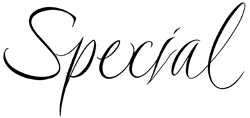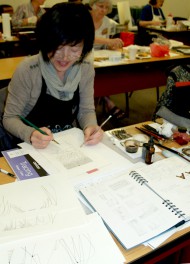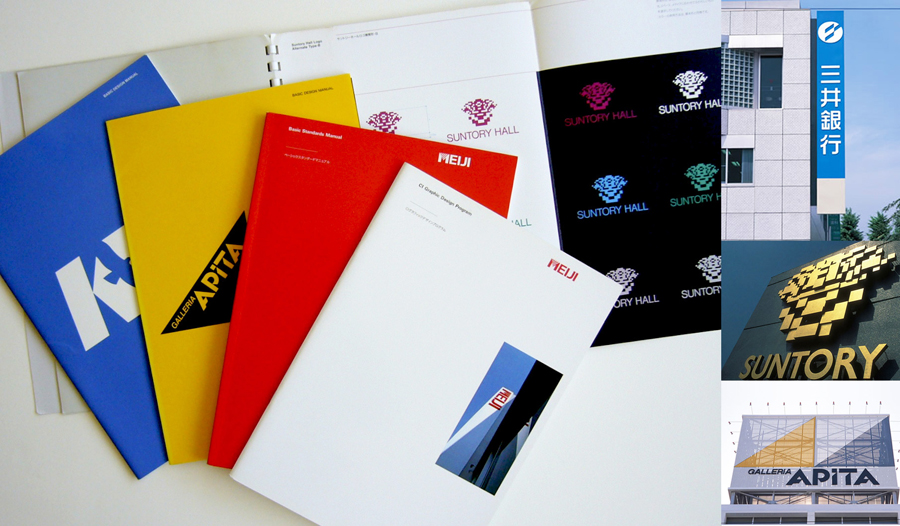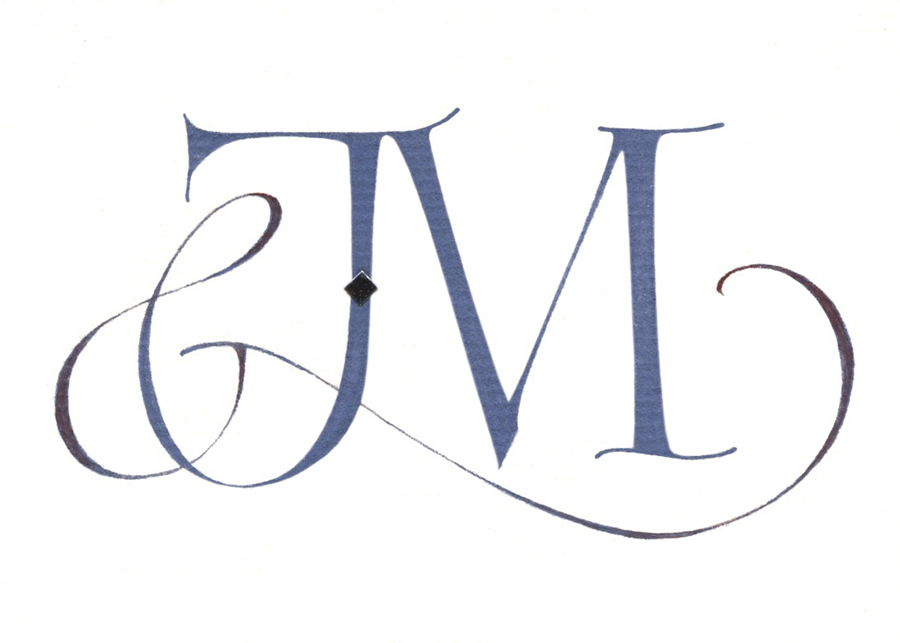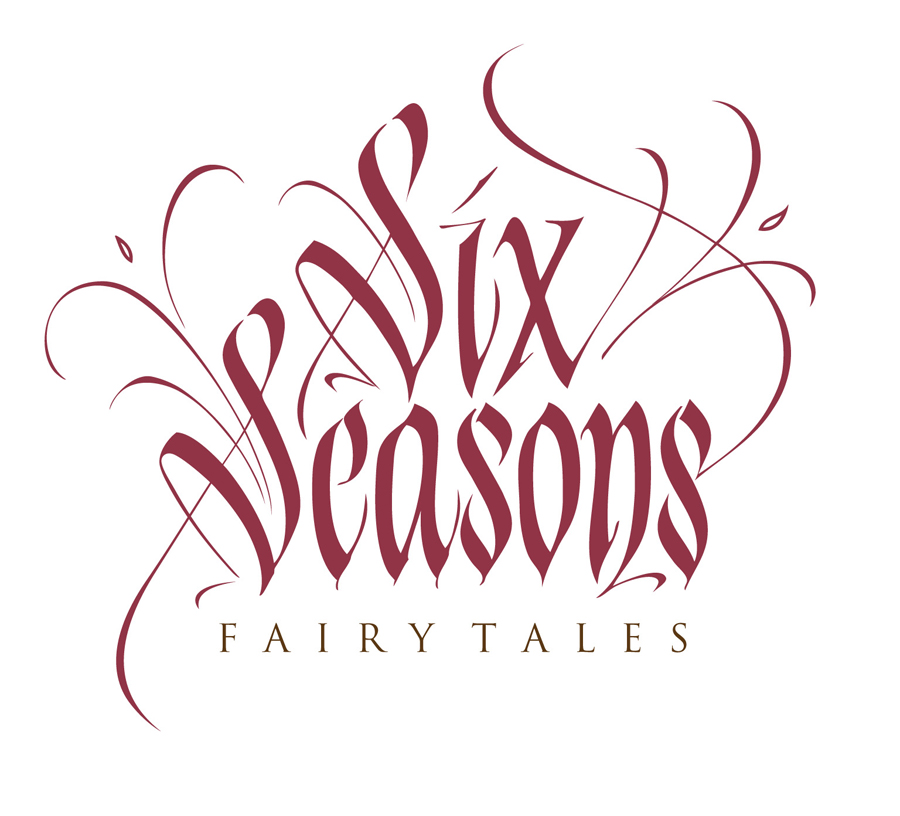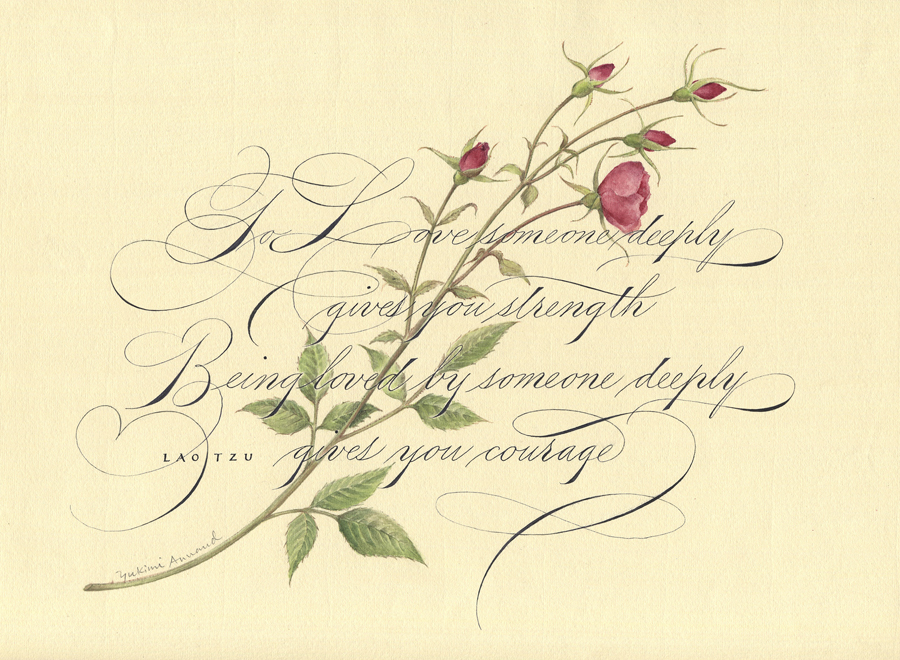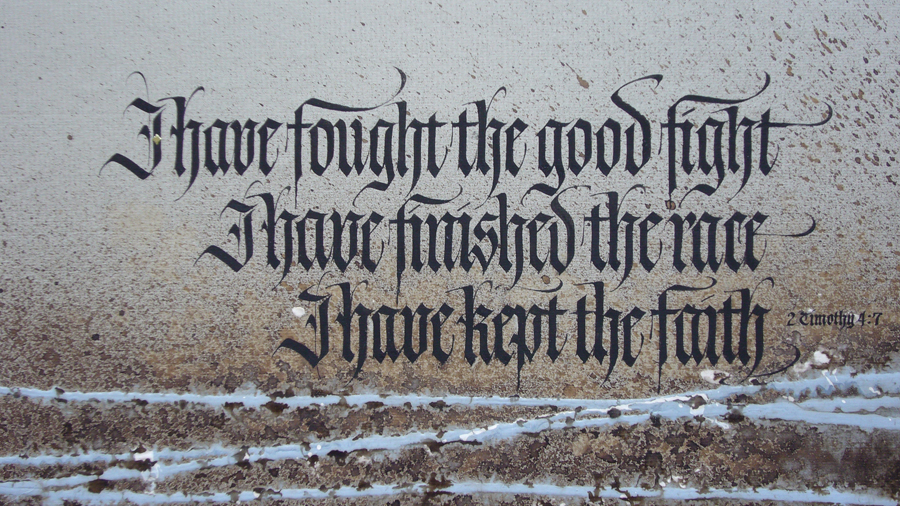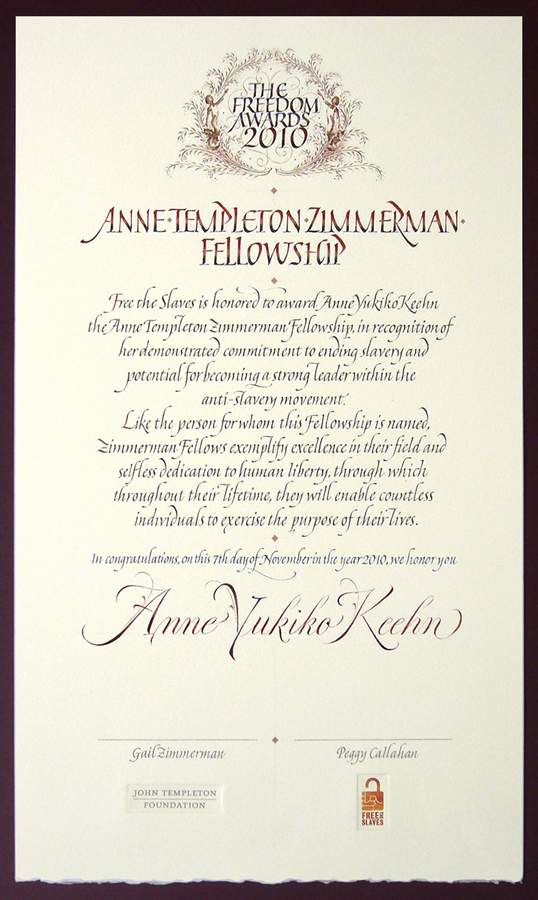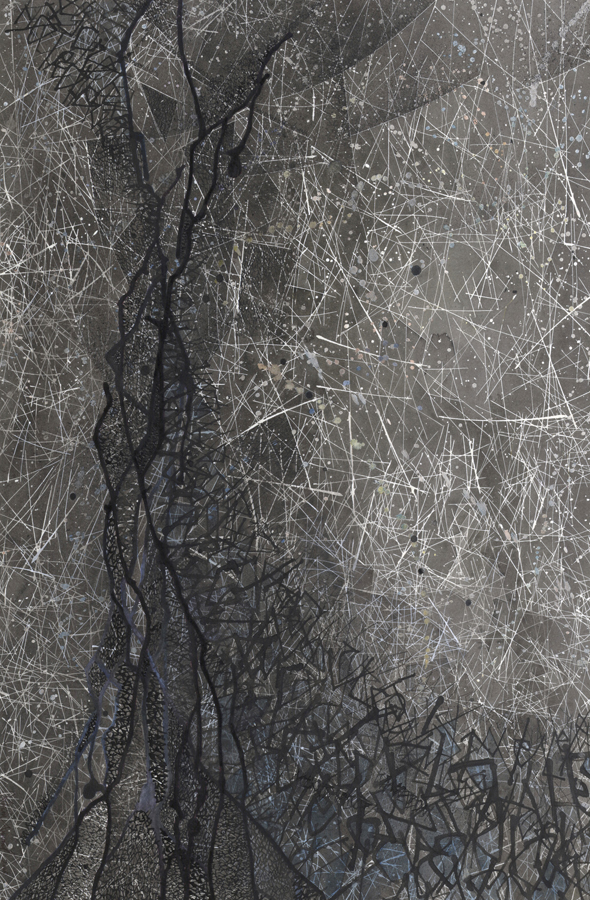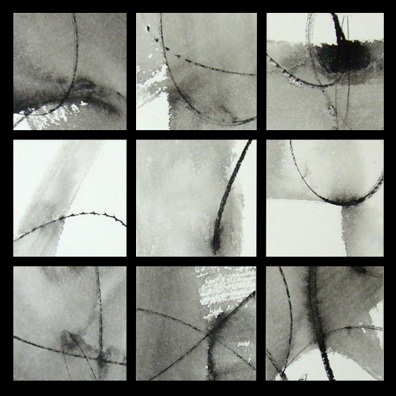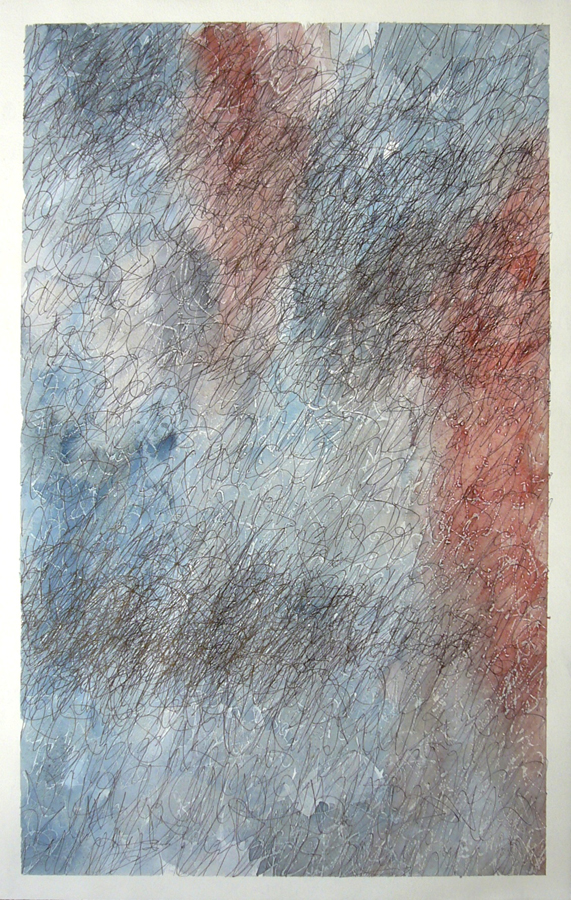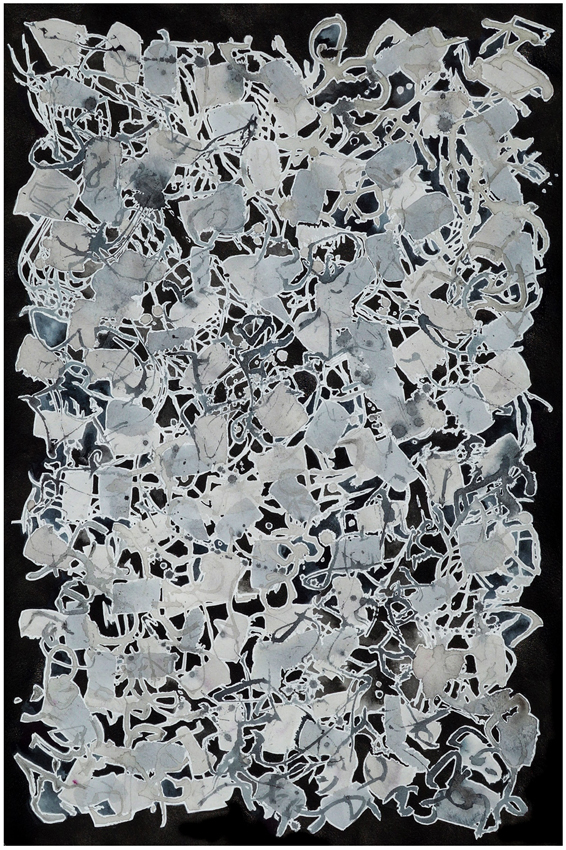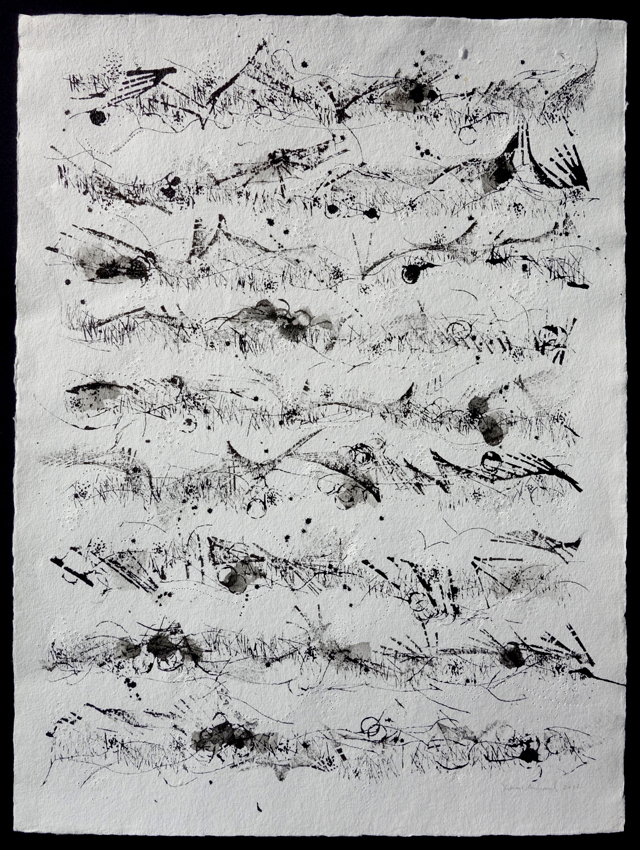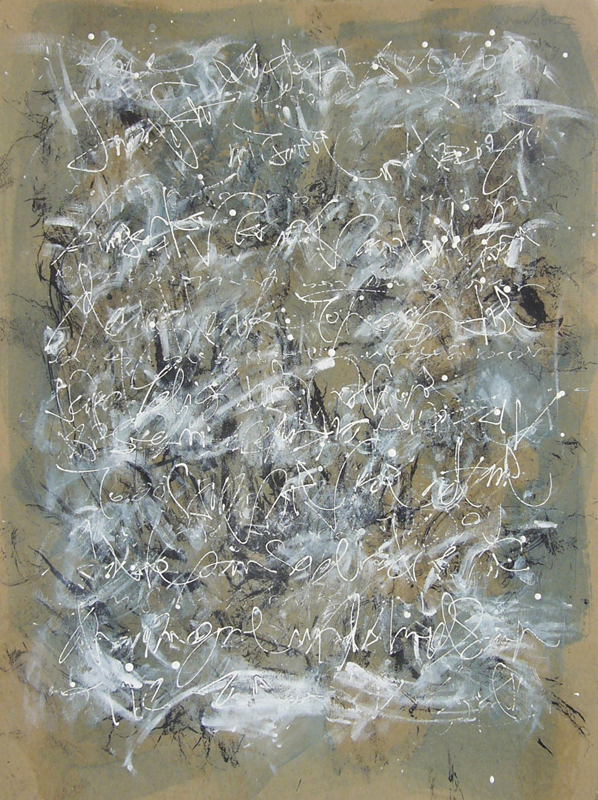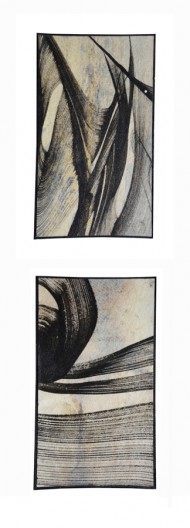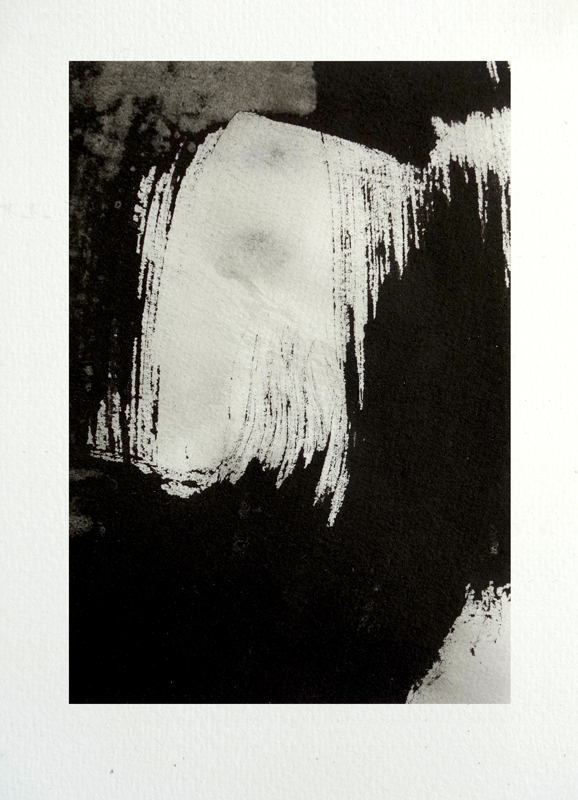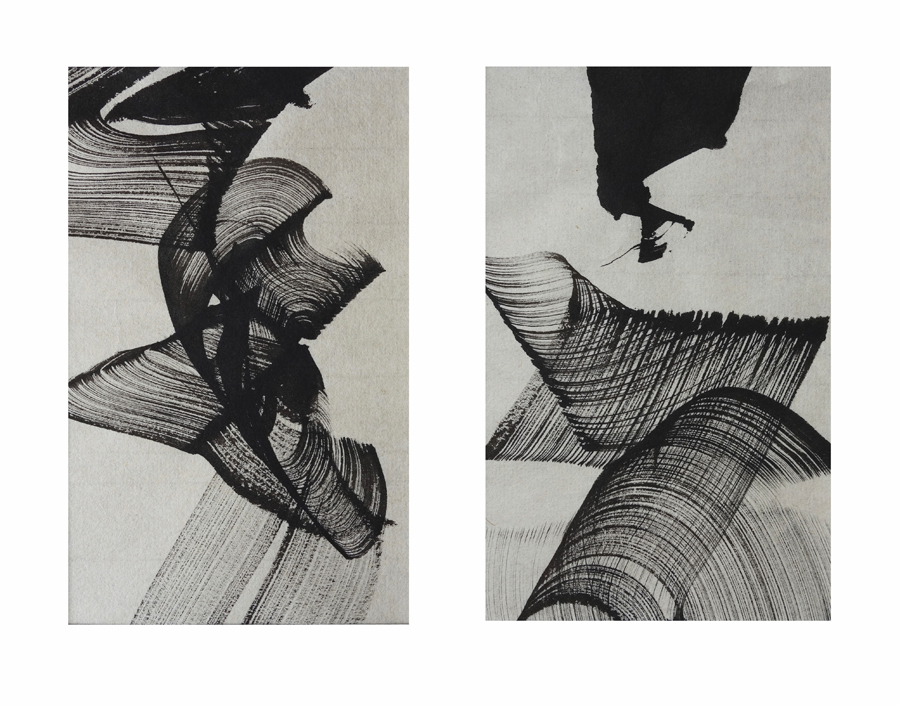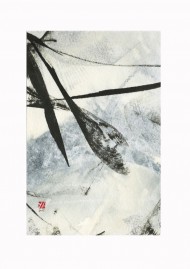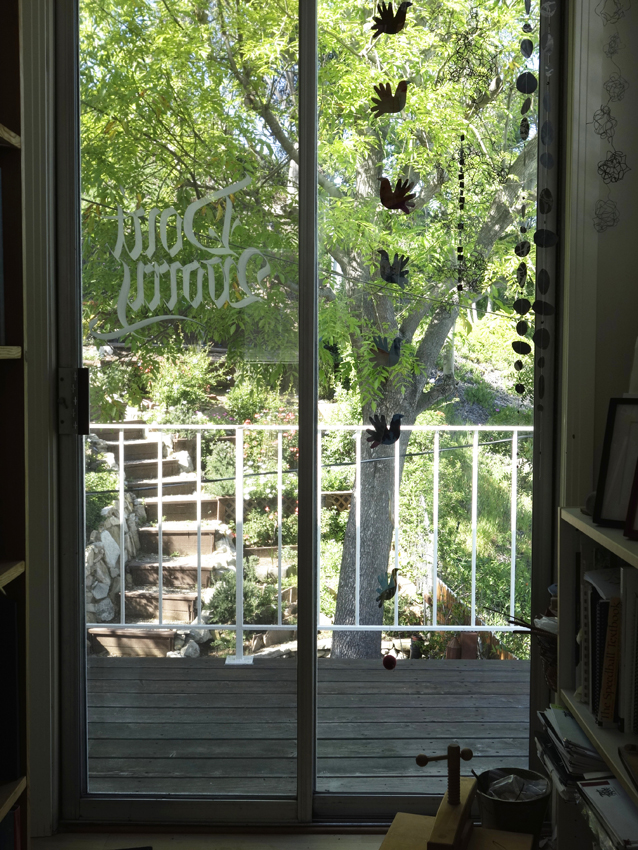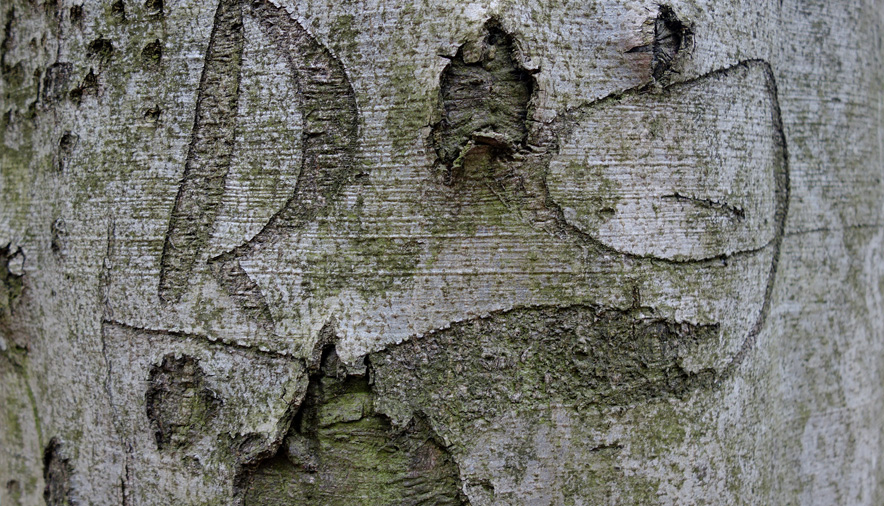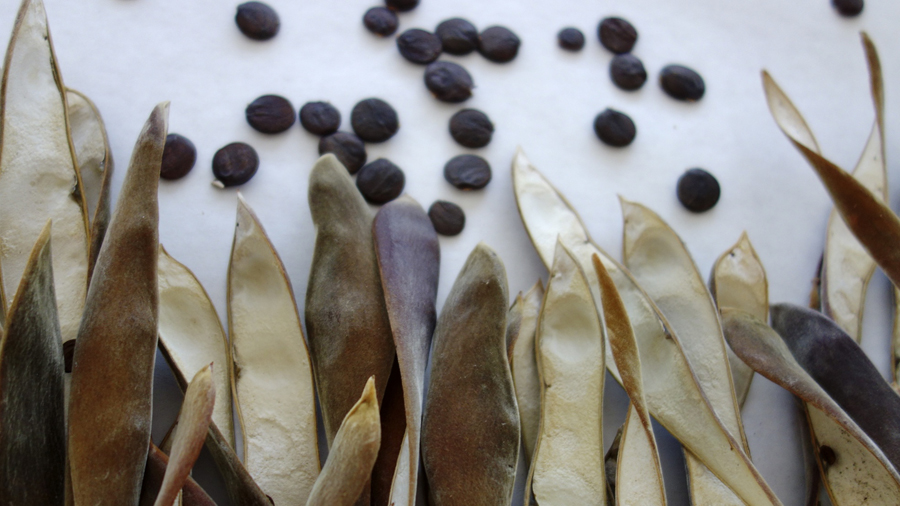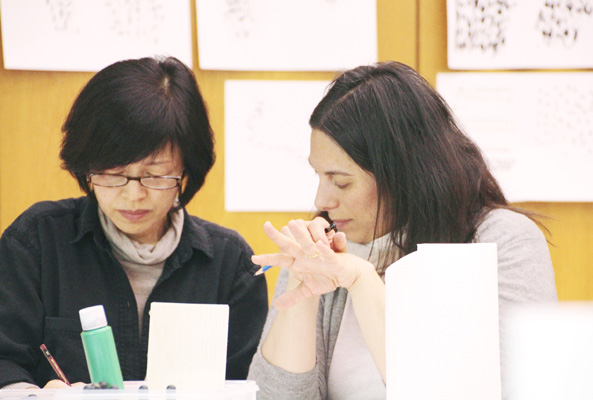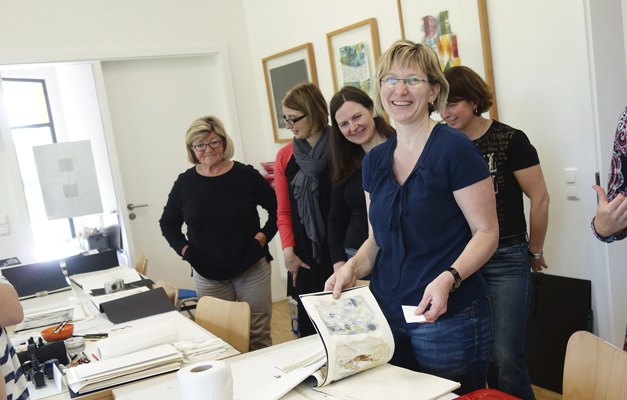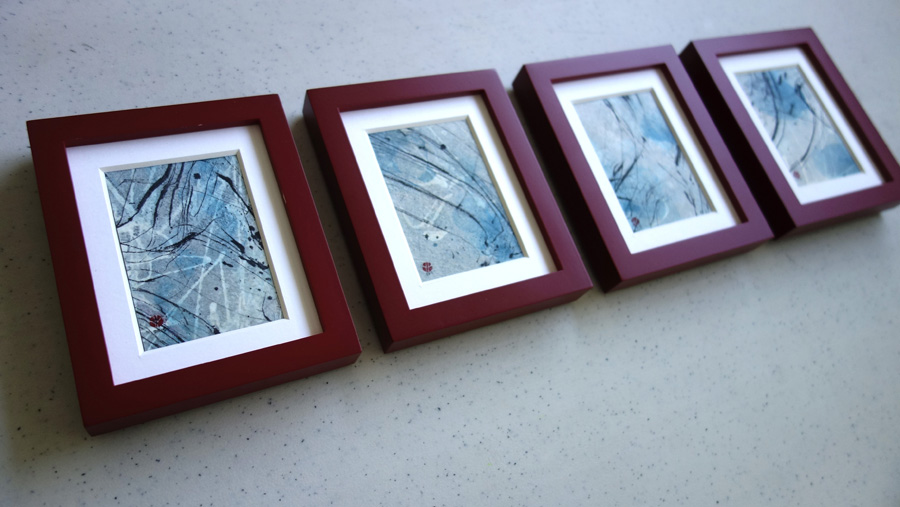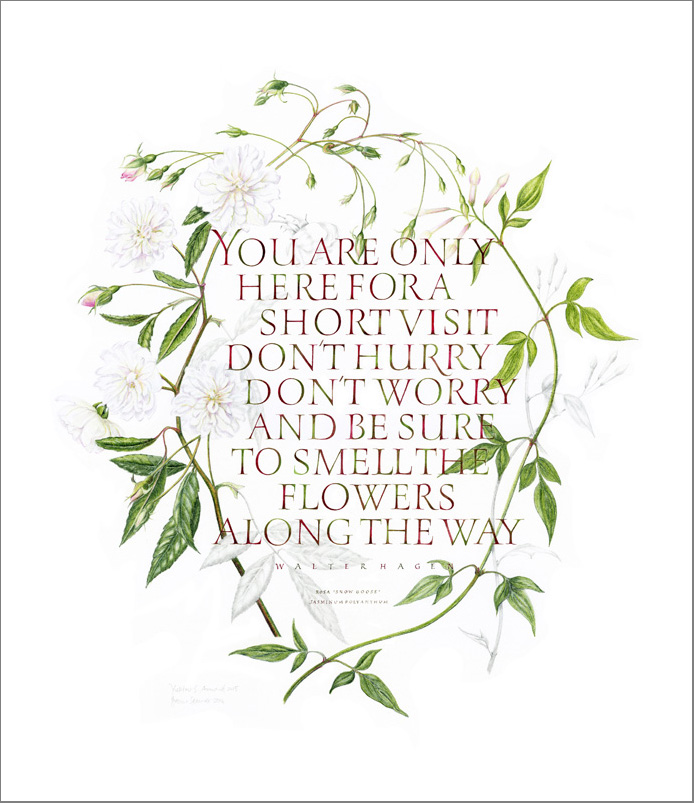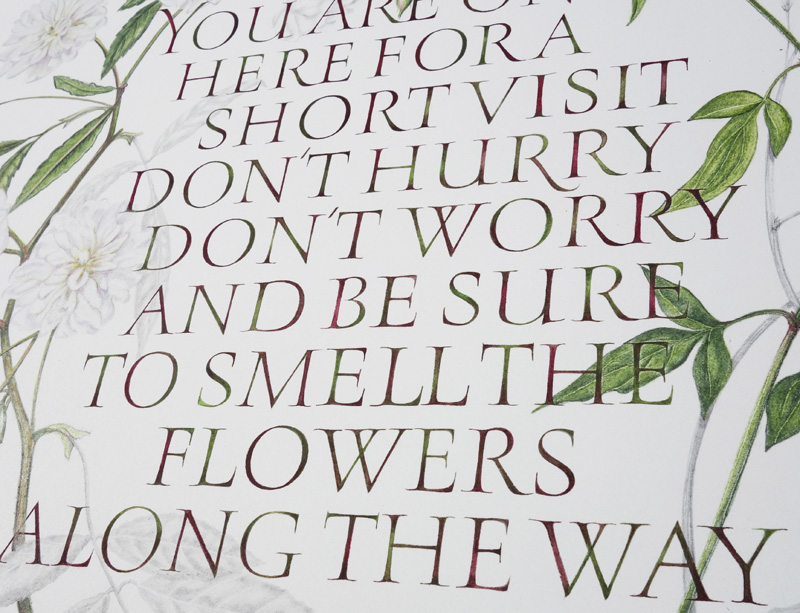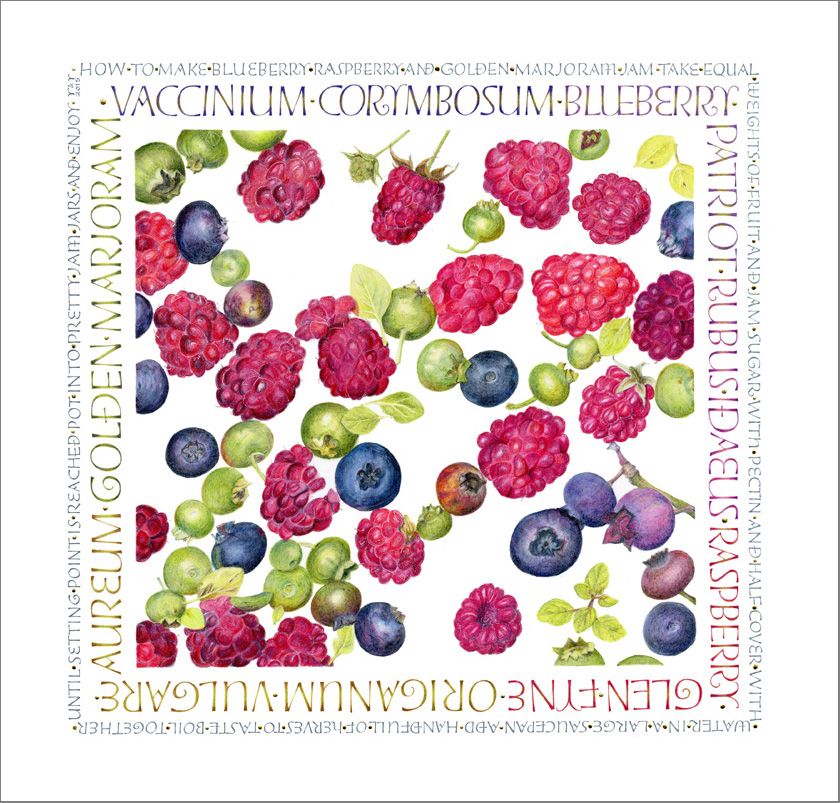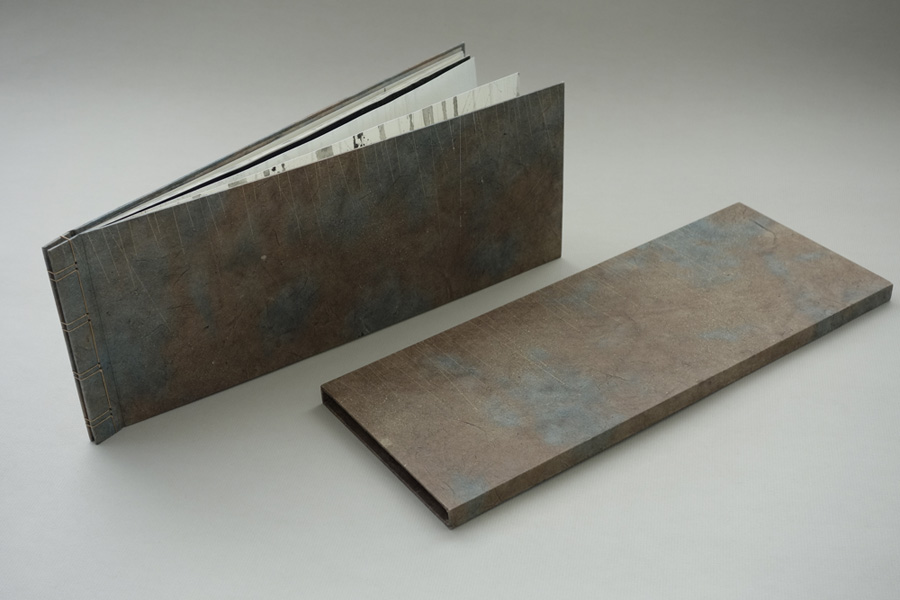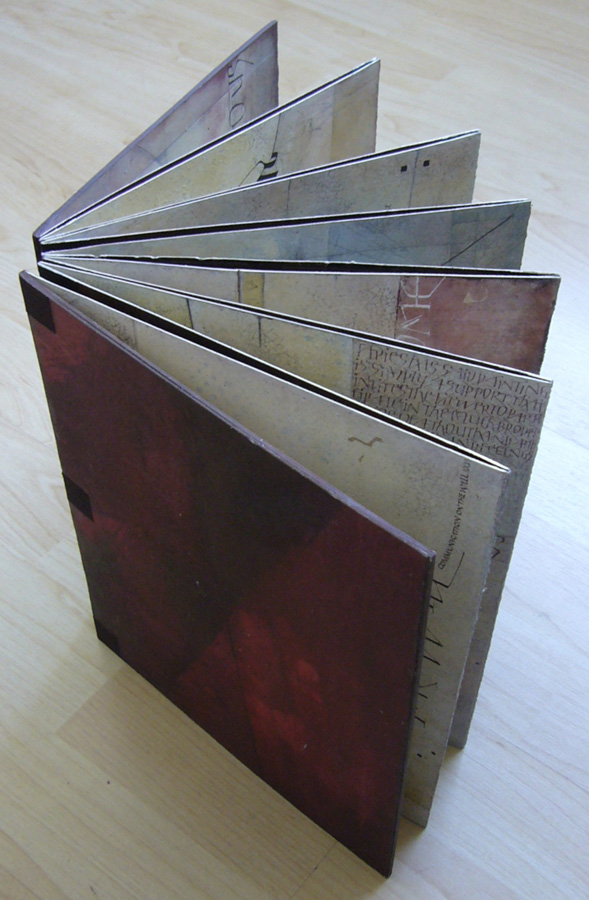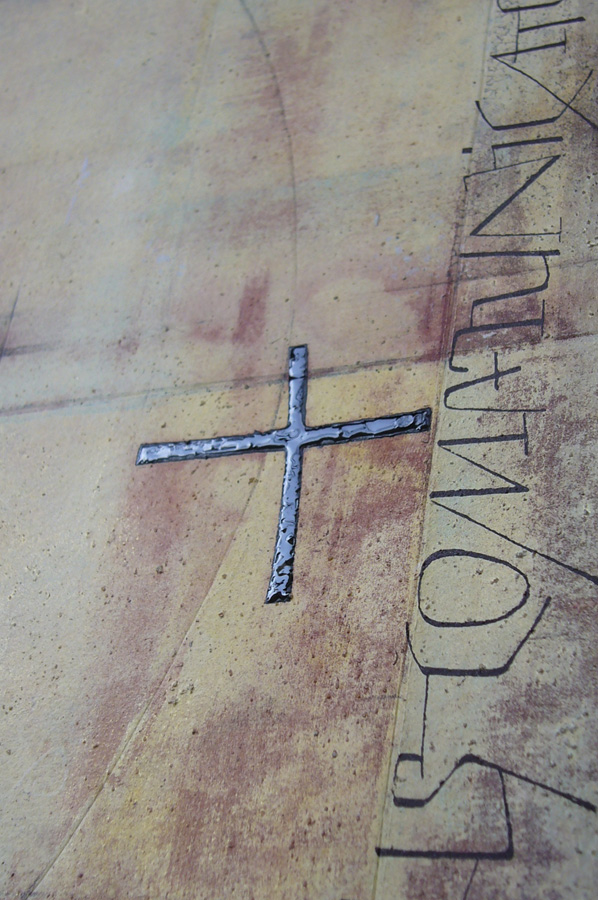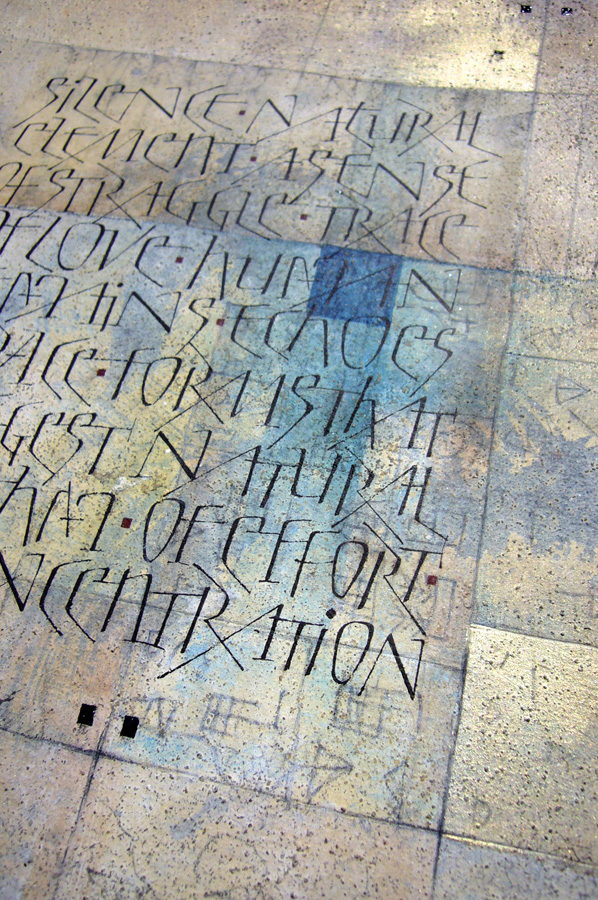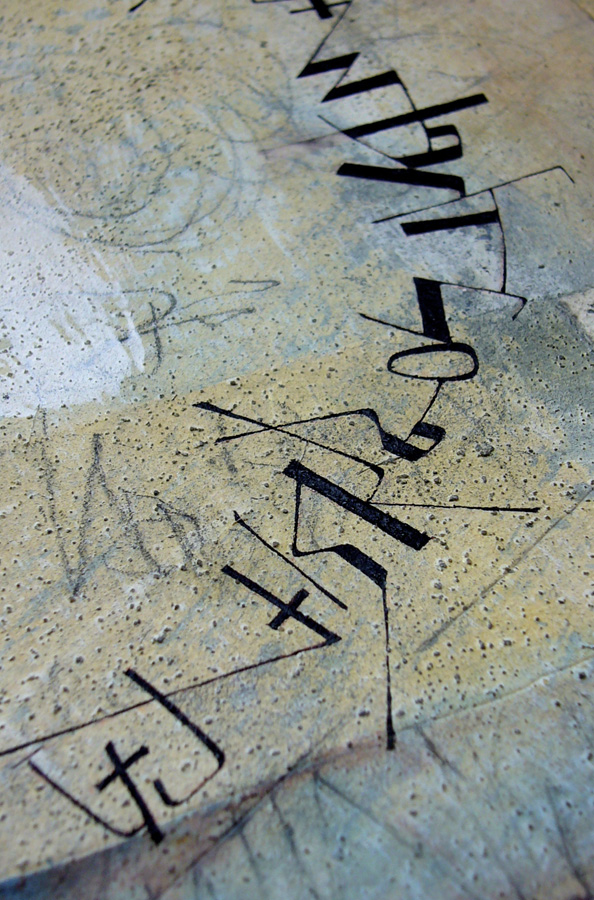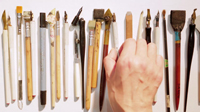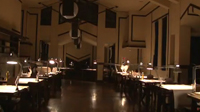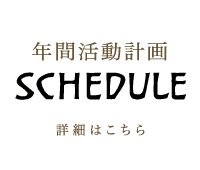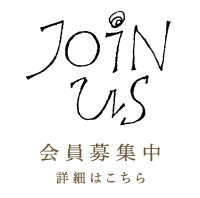Interviewed by Annie Cicale
Yukimi Annand is an inspirational calligrapher and artist. I met her in Los Angeles at one of my workshops, where she sat in the front row, right under my nose. The experienced calligraphers attending the workshop were all responding wonderfully to the exercises I was presenting, but every time I’d glance at Yukimi’s papers, I could see that she was taking each idea beyond my highest conceptions of the possible. I immediately became a fan.
Right, Yukimi taking the "Monoline Magic" workshop
Who is this wonderful woman? This interview was conducted by email. The first section gives some of Yukimi’s background; the second is based on her answers to questions similar to those used on TV’s Inside the Actor’s Studio, which give further insights into her thinking.
Yukimi studied communication design in the 1980s in Tokyo, Japan. At her art school, one of her teachers, Akiteru Nakajima, was a typographer and lettering designer who admired Hermann Zapf. In his lettering class, students learned about the history and letterforms and were given plenty of assignments to write and draw both Japanese and Western letters by hand. Yukimi loved these assignments. He also encouraged her to participate in the meetings held by the Japan Typography Associaion, where she met many designers who had fallen in love with letters.
After graduation, she worked as a graphic designer at Takenobu Igarashi's studio. She admired Igarashi's unyielding attitude towards beauty, simple clear concepts, and his challenging spirit. He was a great influence on her. In her career as a graphic designer, Yukimi worked on corporate and visual identity design focusing on the conceptual process of the identity program. She designed logos, symbol marks, and related items such as promotional posters, brochures, packages, and stationery. The economy was very strong in Japan at that time and many companies were spending a fortune for their new images. While she loved the process of serving clients, working on a number of projects simultaneously became overwhelming. Yukimi believes a good graphic designer can contribute to our culture and environment, but she could not do that with all of the projects. She took a break in early 1990s and moved to the United States to refresh her mind and study graphic design again.
Monogram, 2012
Book title, 2014
Logo for an event, 2012
After spending the spring in the United States and summer travel in Europe, Yukimi married and had two sons in the next few years. While dealing with family duties, she took a desktop publishing course and learned computer graphics at a university while working as a freelance designer. In the winter of 2000, when her younger son started school, she enrolled in a botanical drawing class that unfortunately did not materialize. The teacher suggested that she might take her calligraphy class instead. From that class she learned the historical background of calligraphy and started to make strokes with ink and nibs. She was fascinated to be using her hands to express her love of letters once again. Three years later, one of her friends asked her to teach calligraphy. That helped her to become very serious about learning calligraphy. She took correspondence courses offered by the Society of Scribes and Illuminators (SSI) and well-known calligraphers, and also attended workshops and conferences along with taking weekly classes.
Pacific State Floral Alphabet, 2008
To Love, 2008
Spring Thunders Down, 2008
Let Us Be Grateful, 2009
The Thing of Beauty, 2006
The Dandelion, 2009
I Have Fought, 2013
The Freedom Award Certificate, 2010
After years of studying traditional Western calligraphy, she understood that she needed unlimited hours to master letterforms. At a certain point (around 2006) she began to ask herself, "What can I do with my love of the Roman alphabet?" She set a new goal of combining the expression of the meaning of text with her own feelings, merging the two into a kind of abstract art. She started to search for and collect any images of art she liked, and experimented making marks and textures, playing with backgrounds. She struggled in the beginning with a gap between what she wanted and what she could do. Gradually she began to see what she really liked. For example, the design elements she loves include tones of gray, combinations of strong and fragile elements, textures in nature, long vertical rectangular proportions, a tension of line and space, ink and water, etc.
I Am Meth - Come Take My Hand, 2006
I Am Meth - Let Me Lead You to Hell, 2006
Contagion, 2009
Fall in Love Dear Maiden, 2011
Evening Primrose, 2009
Winter Trees, 2009
The calligraphers who have inspired her most are Thomas Ingmire, Brody Neuenschwander and Gottfried Pott. The works of Torsten Kolle, Yves Leterme, Kitty Sabatier, Denise Lach and Yuko Wada are also her inspiration, as well as calligraphers who follow the British tradition: Ann Hechle, Ewan Clayton, Sheila Waters, Gaynor Goffe and Susan Hafton.
Her artworks are obviously based on Western calligraphy, and they have been clearly inspired by structures and shapes of the Roman alphabet. After years of learning a variety of Roman letters, she has discovered the beauty of each stroke, and the unique textures that result from writing them with rhythm. They become the source of her creations. And with her natural spirit, she explores using any tools from nature and everyday life to examine how they work for making marks. Lately, she is trying to combine abstract Eastern calligraphy and American abstract expressionist art into her calligraphic works.
Counter Space, 2014
Indigo Waltz, 2012
Indigo Waltz 2, 2013
Yukimi continues to teach group lessons in her studio. And she started to give workshops in North America and Canada in 2011 to share her ideas. Now she travels to Europe and other places to do so. She sets aside time for teaching and commission work, but always keeps some time and mental space for her personal projects. Her studio space is small and she wishes to have a larger one, but feels so fortunate to have a dedicated space. Her studio gets bright sunlight during a day and she can see growing trees from the window.
Questionnaire Similar to Inside the Actor's Studio
1. What is your favorite word?
Honesty.
2. Describe your earliest memory of your first creative spark.
I always liked to draw as I remember and I received prizes for my drawings from early school days. Maybe those experiences were sparking me. But something that really sparks in my memory was the view of a poster about preventing pollution that I noticed at the local train station. It had a strong message with a child's drawing and several words. At that time I was a high school senior and was searching for my future life. I was a very shy girl who was not comfortable to talk in front of people. I thought the verbal messages I composed did not have much power. I was fascinated to think that I could communicate something with a visual message. The feeling grew, and I chose to study communication design.
3. Do you feel growing up on a flower farm influenced your art in any way?
I grew up in a very small town in Japan, surrounded by the ocean and hills. The scent of flowers, the changes in the air in different seasons, watching the growth of plants and flowers and the changing colors—all of these experiences are a part of me. Growing up on a flower farm has definitely influenced my art.



Left to right: chrysanthemum field in late autumn, paddy field in early summer, and late autumn dusk
4. What inspires you?
Natural textures, the meaning of text, line and space, shapes and colors, contrast of light, music, film, contemporary art, and more. Often my inspiration comes from observing the forces of nature. I might find an interesting pattern of marks in the cracked pavement of a sidewalk or discover a new writing tool from vegetation that falls from a tree.
5. If you could use just one word to describe your approach to writing, what would it be?
Meditation.
6. What is your teaching background? How do you bring that to teaching calligraphy?
In 2003, one of my friends asked me to teach calligraphy. At that time I was doing calligraphy as my hobby and did not think I could teach letterforms. But I thought I might be able to teach layout and design basics for students who were interested in calligraphy. I took a chance and started to teach a small group at my friend's shop. My experience teaching the group taught me how little I knew about calligraphy. My calligraphic studies took on new seriousness and depth. I've been learning and teaching small groups since then, and always find something new. I think I am growing with my students and I love spending time with people who are eager to learn.
In 2011, with our local society's encouragement and interest in my creation of textures using calligraphic marks, I started to teach workshops to bigger groups. Carrie Imai, who was President of the Society for Calligraphy Southern California, gave me the impetus to teach at the Letters California Style Conference. It was a great experience for me to teach experienced calligraphers. Since then, I've been giving workshops in the United States, Canada and Europe. In my mind, I'd rather say my workshops are designed for sharing ideas than teaching techniques.
(photos taken by Jurgen Gaisbauer and Gertrud Ziegelmeir)
7. What sounds or noises do you love?
Rain. Since I live in Southern California, I miss so much the sound of rain. The sound of wind, streams, waterfalls, ocean waves, and the breathing sounds of our family, including our dog, sleeping in a tent when camping.
8. What sounds or noises do you hate?
Scratching metal or glass.
9. What do you do when you get stuck?
I bake. Go out and have a walk. Do gardening. Take a nap. Go to tai chi lessons.
10. What fine art (genre and/or artist) inspires you most?
Modern art (Paul Klee, Wassily Kandinsky), contemporary art (Antonio Tapies, John Keats), Japanese abstract calligraphy (Toko Shinoda, Christine Flint Sato) and American abstract expressionism (Conrad Marca-Relli, Mark Tobey, Lee Krasner).
11. What profession, other than your own, would you like to attempt?
Botanical artist, ceramic artist.
12.What profession would you not like to do?
Any work connected to numbers.
13. What are the dominant themes in your work?
The energy of nature and energy from humans.
Emotional Ocean, 2014
Muddy Iceberg, 2013
Wave, 2013
14. Which leads you first in your creative process, the words or the images?
Often the meaning of the text I choose leads me to create. Sometimes sheets of textured or washed backgrounds or textures in nature lead me to create. If I write text legibly on my creation, it is often applied at the last stage.
15. Do you ever collaborate with other artists or writers, or do you like to work alone?
Basically, I like to create things by myself. I haven't had much experience with collaboration work with other artists yet. However, collaboration work with botanical artist Yvon Sonsino was a very good experience. After she saw my piece written in Roman capitals on social media, she asked me if she could draw flowers on it. With a spirit of mutual trust, the piece traveled back and forth between the United Kingdom and the United States, and the final result was beautifully done. I am willing to do more collaborative works and I would like to challenge large-scale collaboration work one day.
Along the Way, 2015 (the whole piece and detail)
Berries, 2015
16. Any advice for newbies?
The best advice I can give new calligraphers is to learn letterforms with good samples. Find the secret of their beauty by yourself. Be patient with your practice and work on your strokes to write beautiful letters. At the same time, train your hand and body to be free to make any marks. Pay attention to the composition and colors of any object or scene in everyday life. Be yourself. Make notes of the words or text that inspire you.
17. Do you keep a journal? Does your work there become a part of your more complex work?
I do not keep a journal, but I often sketch my ideas in my small sketchbooks. Yes, some of my sketches become a base of final pieces.
18. If Heaven exists, what would you like "God" (your concept of God, at any rate) to say when you arrive at the Pearly Gates?
I do not have the concept of God and the Pearly Gates. It is not easy to imagine any words for God……
(Annie Cicale wrote the original article for a journal published by the Friends of Calligraphy based in San Francisco, California. With the permission of the author, Yukimi Annand has edited the article for J-LAF.)
Annie Cicale is a teacher of lettering, drawing, printmaking and painting who teaches internationally. She is the author of The Art & Craft of Hand Lettering. Annie lives near Asheville, North Carolina, where she maintains her studio and tries to keep the herons from eating the koi fish in her pond.
Yukimi Sasago Annand is a calligrapher, text artist, and teacher who lives in Southern California, United States. She was born in 1961 in southern Chiba, Japan. After studying communication design in Tokyo, she worked as a graphic designer at Takenobu Igarashi Studio, where she mainly worked on visual and corporate identity design programs. She moved to the United States in 1990 and discovered the world of Western calligraphy in 2000. She has been fascinated by that world ever since and continues to study about letterforms as well as explore the world of text art. She has taught workshops in the United States, Canada, Europe, and Australia since 2011 to share her knowledge and experience. Her work has been frequently shown in Letter Arts Review as well as other calligraphic journals and books. Art journals have also featured her work and articles. Her work is included in calligraphy collections in Berlin, San Francisco, and Moscow.
A Fool's Life - Rain, 2009 (the whole piece and detail)
The Wall, 2010 (the whole piece and details) - due to become a part of the collection
